In an era before computers and before jets, Eastern Air Lines operated daily flights over an enormous network of routes – concentrated primarily east of the Mississippi River – bringing reliable long-distance and short-haul air service to dozens of cities large and small. By 1959, the airline was serving 102 airports in the eastern United States and two in Canada, plus San Juan, Bermuda, and Mexico City, with daily scheduled service.

CAPTAIN EDDIE’S AIRLINE
The company was under the authoritarian rule of Captain Eddie Rickenbacker, a stubborn, opinionated leader who had been a World War One flying ace. Rickenbacker presided over Eastern with an iron fist and, though both he and Eastern had their detractors, his company racked up profits every single year from 1934 through 1959.
Rickenbacker dubbed Eastern’s aircraft The Great Silver Fleet. At the end of 1949, Eastern was operating 88 airliners: 50 Douglas DC-3s, 18 DC-4s, and 20 Lockheed Constellations.

SILVER FALCONS
Rickenbacker found his DC-3 replacement in the form of a modern twin-engine design offered by the Glenn L. Martin Co. of Baltimore. The Martin 404 (Four-Oh-Four) was a sturdy, pressurized aircraft designed to carry 40 passengers in a comfortable cabin featuring 10 rows of four abreast (two-by-two) seating. Eastern ordered 60 of them.

The company logo featured a stylized falcon in flight, leading Captain Eddie to name his new twin-engined airliners, which would be the predominant type in his fleet, Eastern’s Silver Falcons.
Although Eastern Air Lines is associated with its burgeoning Constellation fleet in the 1950s, it was the company’s bevy of Martin 404 Silver Falcons that did the short-haul work, blanketing the airline’s territory and bringing air service to cities from Boston to Brownsville.

LOCAL SERVICE TO SMALL CITIES
Rickenbacker did not care for the Civil Aeronautics Board (CAB), the government agency that regulated America’s airlines. He did not approve of the subsidy provided by the Board to carriers for serving small cities. He believed that the money lost serving smaller cities should be covered by the revenue generated serving popular routes among big cities. And so, while other trunk carriers were gladly turning over their small stations to the newly-created local service airlines, Eastern continued to serve many places like Rome, Georgia; Bowling Green, Kentucky; Anderson, South Carolina; and Danville, Virginia, with its fleet of five dozen Silver Falcons.
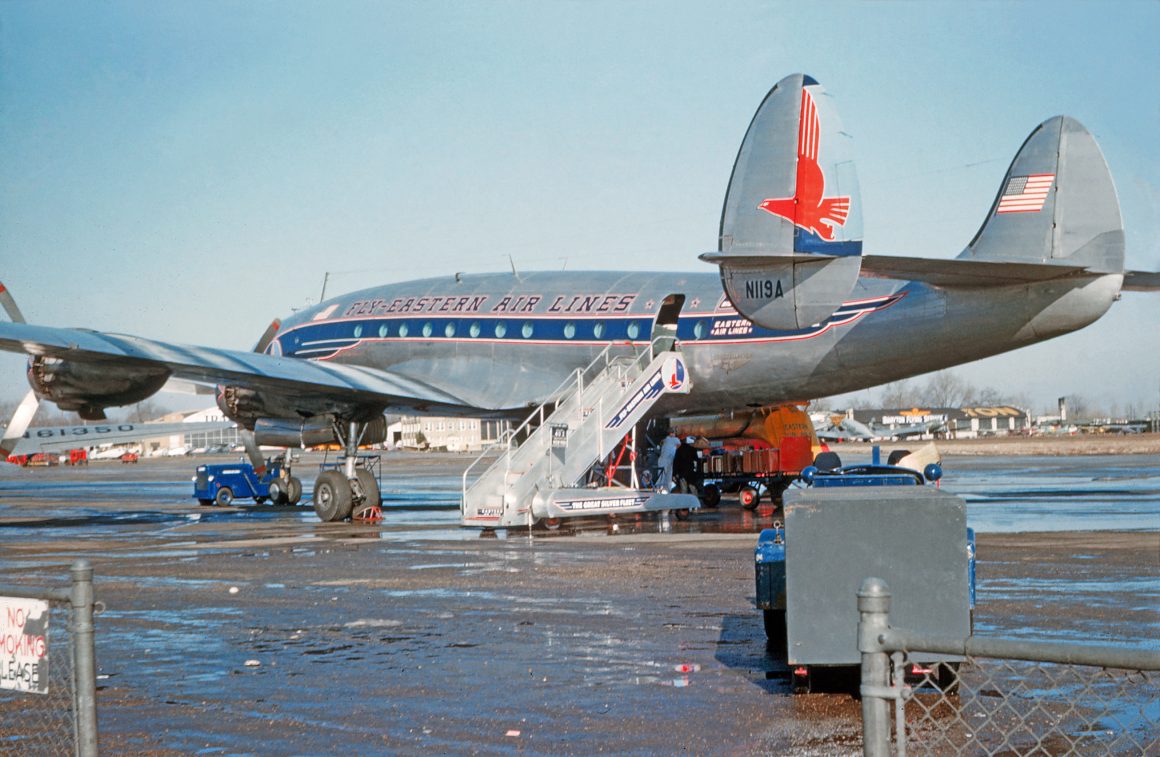
SUPER CONSTELLATIONS
To keep pace in its long-haul markets, Eastern ordered fourteen, 88-passenger L-1049 Super Constellations, which were delivered in 1951 and 1952. The gleaming silver, tri-tailed Lockheed airliners were becoming synonymous with Eastern.
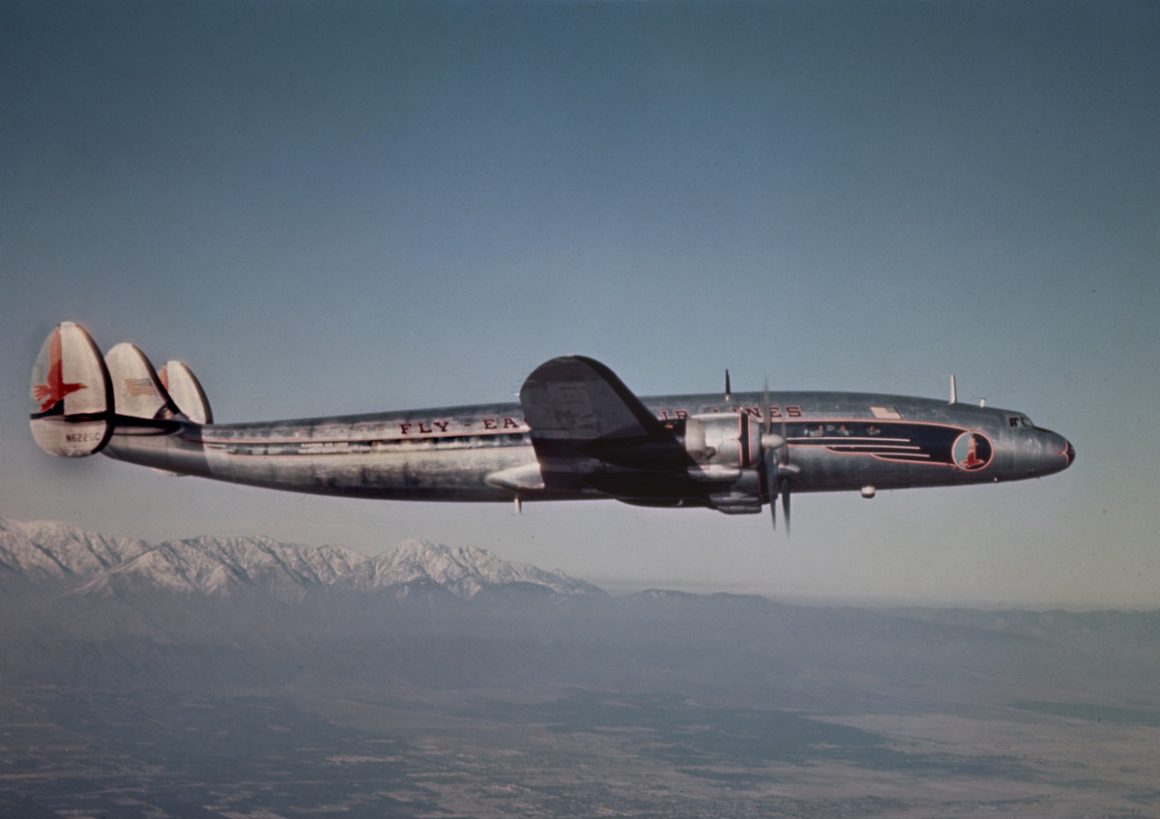
The first of sixteen advanced L-1049C Super-C Constellations entered service with the airline in November 1953.
Also that year, Eddie Rickenbacker ‘stepped down’ from his role as President, becoming the company’s Chairman of the Board and CEO, while Thomas F. Armstrong ascended to the presidency. This turned out to be an empty change of title. Captain Eddie was not about to relinquish any of the control that he exerted over ‘his airline’.

EXPERIENCE INSPIRES CONFIDENCE
The company’s motto, “Experience Inspires Confidence”, relayed Rickenbacker’s belief that safety and reliability were paramount, while service was secondary. Terms like experience, confidence, and dependability were emphasized instead of attributes that other carriers were promoting, like finest and fastest.
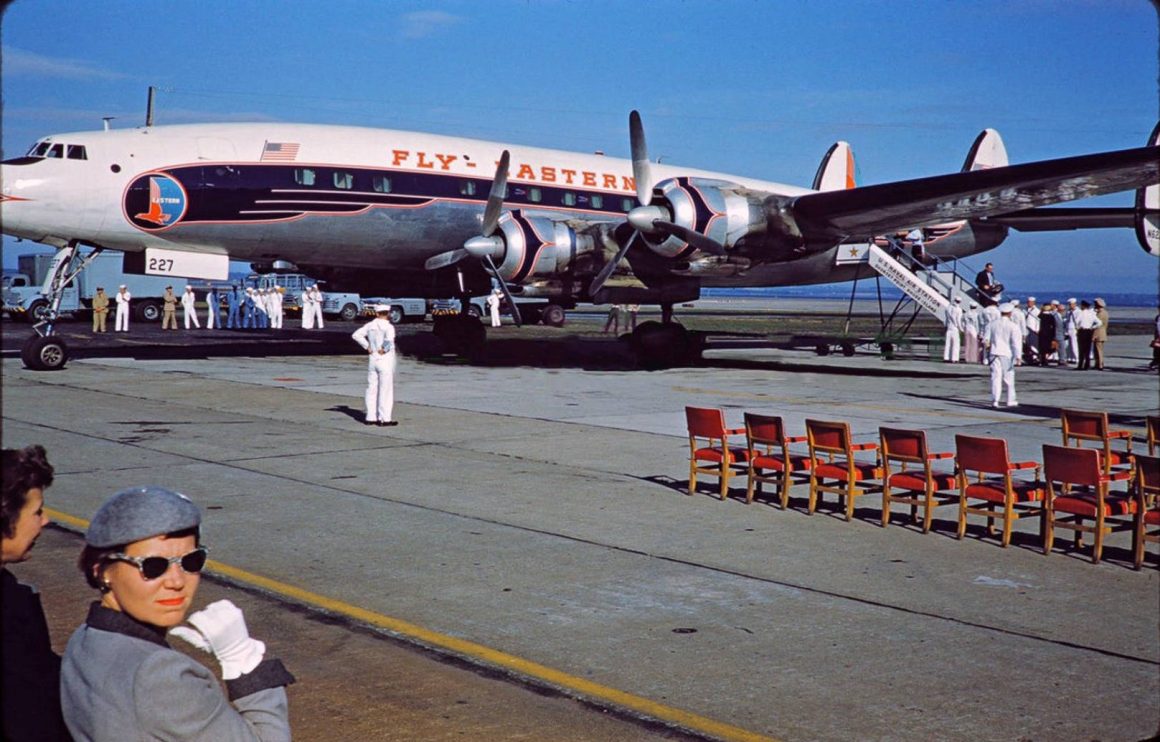
And, while Captain Eddie was proud of Eastern’s refusal to accept subsidy, his huge network of short-haul routes serving smaller cities with a large fleet of twin-engined planes was going to be a burden to the airline once the Jet Age dawned.

MERGER AND EXPANSION
On June 1, 1956, Eastern acquired Colonial Airlines, a carrier with a small system stretching northward from Washington and New York to Canada. Its international route authority to serve both Canada and Bermuda made it an attractive merger partner.
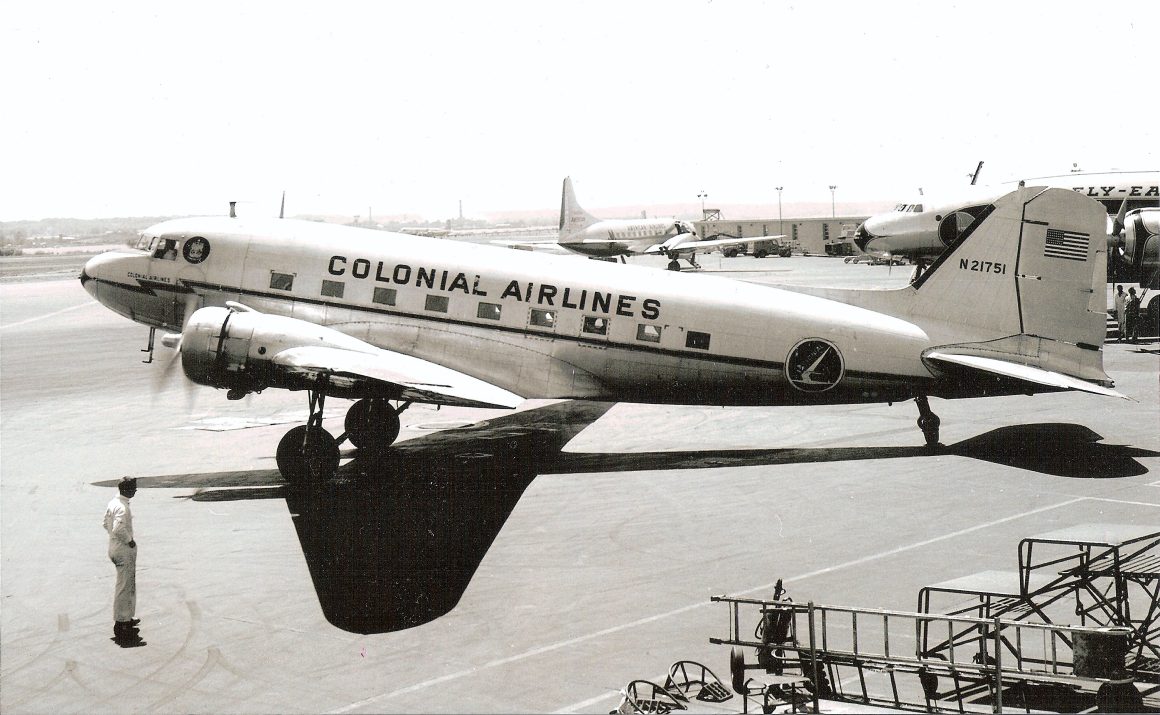
Colonial’s outmoded fleet consisted of five unpressurized DC-4s and eight 26-passenger DC-3s. These were aircraft that Eastern did not want as they were a step backwards in the fleet modernization process. Consequently, the former Colonial system from Washington and New York northward was operated as a separate division for a year while the company acquired more modern aircraft.

CONVAIR SILVER FALCONS
Twenty new 44-passenger Convair 440s were ordered. The 440 was yet another twin-engine piston type and, like the Martin 404s, the Convair 440s were designated Silver Falcons. Eastern now had 79 short-to-medium haul twin-engine airliners in its fleet (one of the Martins had been lost in a landing accident at Owensboro, Kentucky). Martins replaced the old DC-3s on the former Colonial system while the new Convairs were employed to supplement the Martins elsewhere.
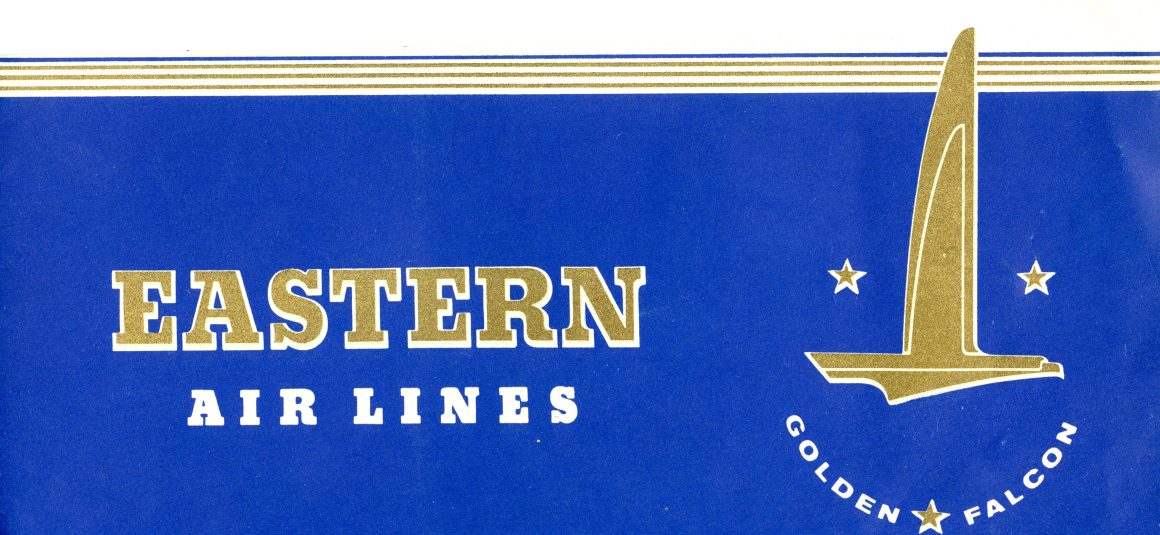
GOLDEN FALCONS
Realizing the need to promote customer satisfaction, Eastern outfitted the first 12 of its new DC-7Bs, delivered in 1955, with “the most luxurious appointments ever incorporated in a commercial transport.” Dubbed Golden Falcons, these 12 aircraft were part of an initial order for 42 DC-7Bs. In addition, ten of the latest model L-1049G Super G Constellations were ordered from Lockheed and were also designated Golden Falcons.
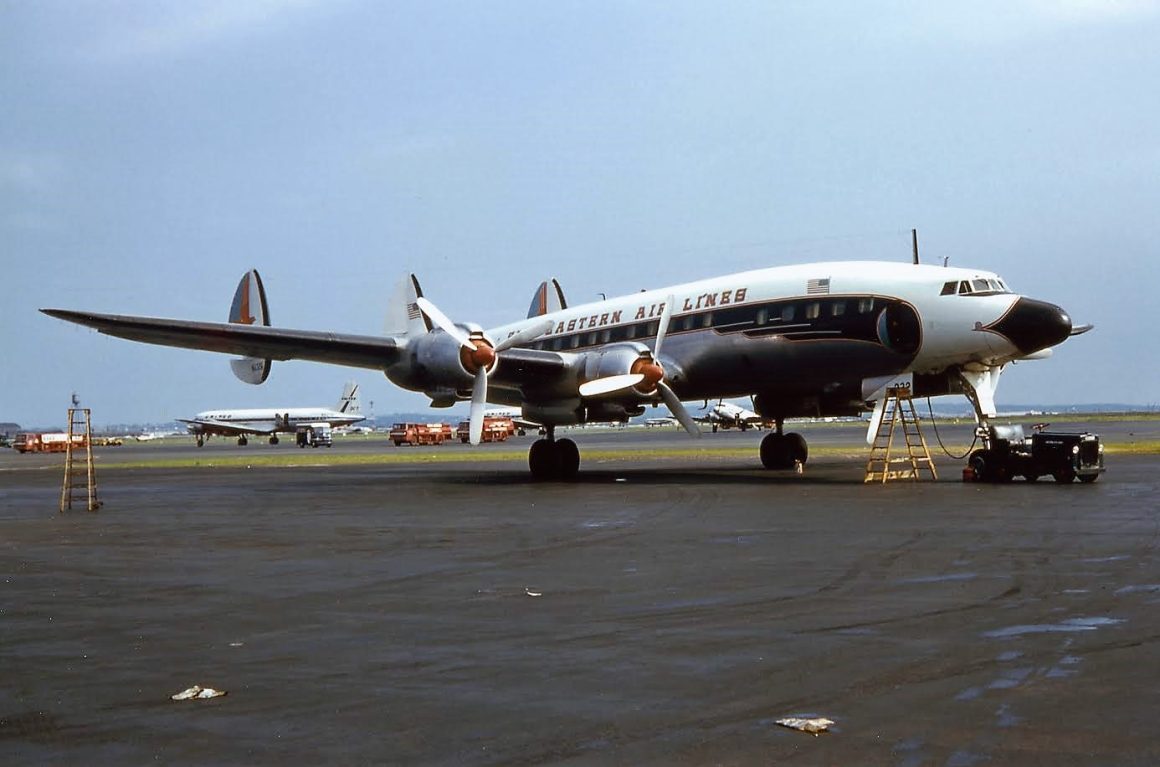
In 1958, nine jet-prop Lockheed L-188 Electras joined Eastern’s fleet as 70-passenger Golden Falcons.
At the end of 1958, Eastern’s fleet of 197 airliners sat on the ground as the carrier was shut down by strikes of the unions representing Flight Engineers, Machinists, and Flight Attendants from November 24 through December 31.
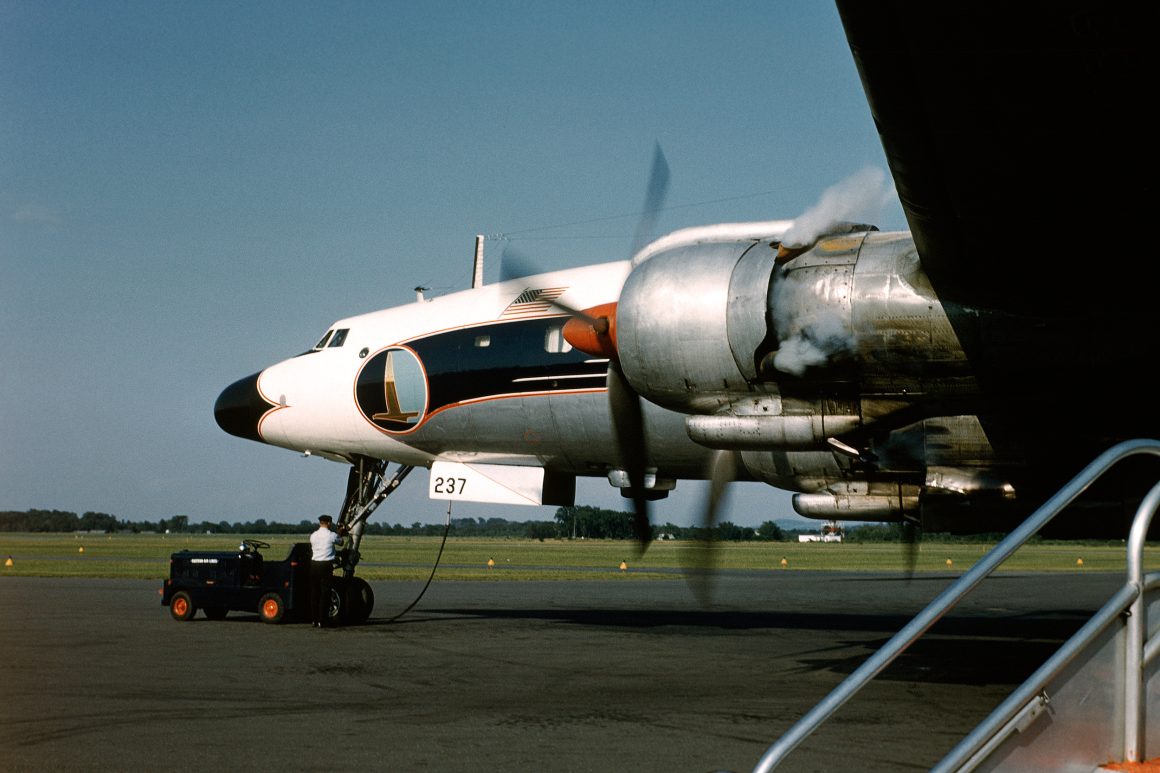
THE JET AGE
Rickenbacker was very cautious about the transition to jets. Instead, He decided to let other airlines break them in while he made a heavy investment in turboprop Electras, ordering 40 of them.

His choice for Eastern’s first turbojet aircraft was the DC-8, and he sacrificed early delivery positions in order to wait for the -21 model, which would be equipped with more powerful engines than the initial DC-8-10 series.
In December 1959, rival airlines were flying new Boeing 707 and Douglas DC-8 jetliners over their most lucrative routes while Eastern was trying its best to compete using the Electras.

Rickenbacker had reduced his jet order to only 15 DC-8s, intending to rely on the turboprop Electras as a buffer while the industry transitioned to jets. But the Electras soon met problems as the FAA reduced their allowed maximum speed while a design flaw was corrected. Several crashes had tarnished the turboprop’s reputation. However, the refurbished models – referred to as Super Electras by Eastern – would continue to serve well for many years to come.
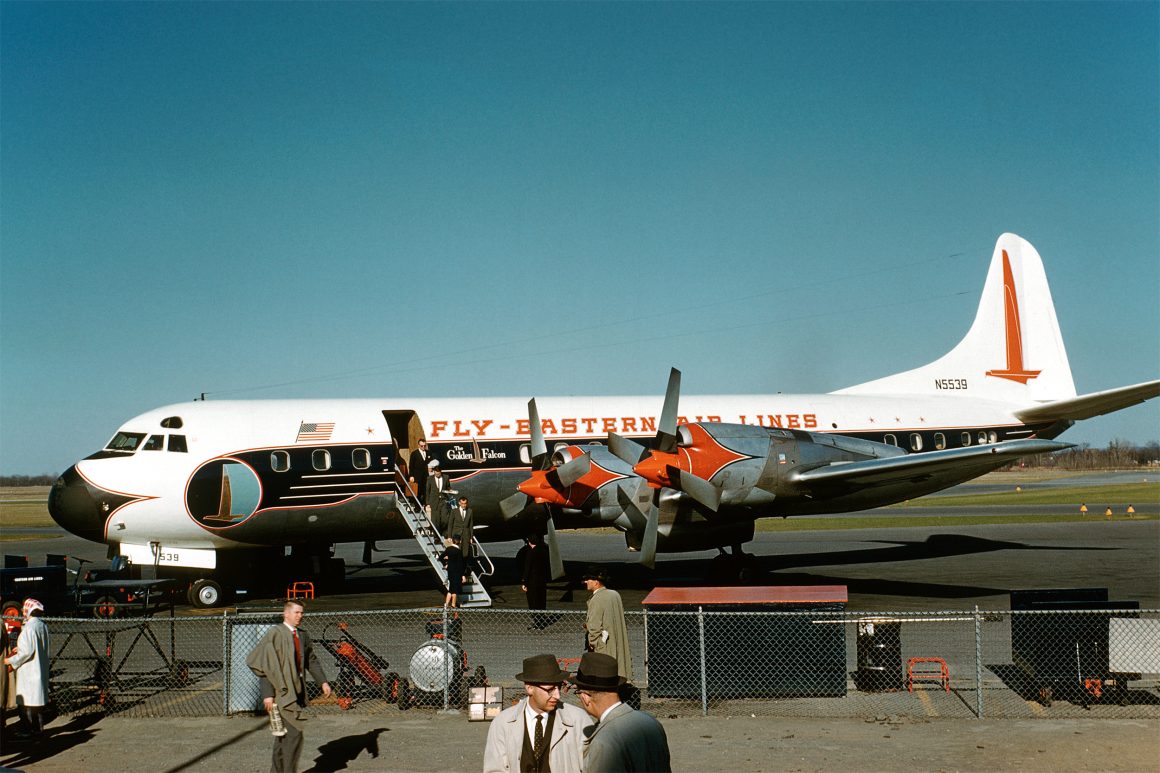
INTO A NEW DECADE
Eastern’s fleet situation – not enough jets and a huge stable of Constellations, DC-7Bs, and piston-engined twins – caused problems for the company as it entered the 1960s. It would be the previous decade – the proud era of Silver Falcons and Golden Falcons – that would be looked upon wistfully as Eastern’s glory years.

